This rosemary-orange turkey comes out of the oven with crisp, golden skin and superb flavor. A sea salt, brown sugar, rosemary, and orange zest dry rub melds beautifully with the inherent flavor of an organic, free range broad breasted bronze turkey. It cooks over aromatics and wine, giving you a head start on fantastic gravy made from drippings. This post is created in partnership with our friends at Farmer Focus.
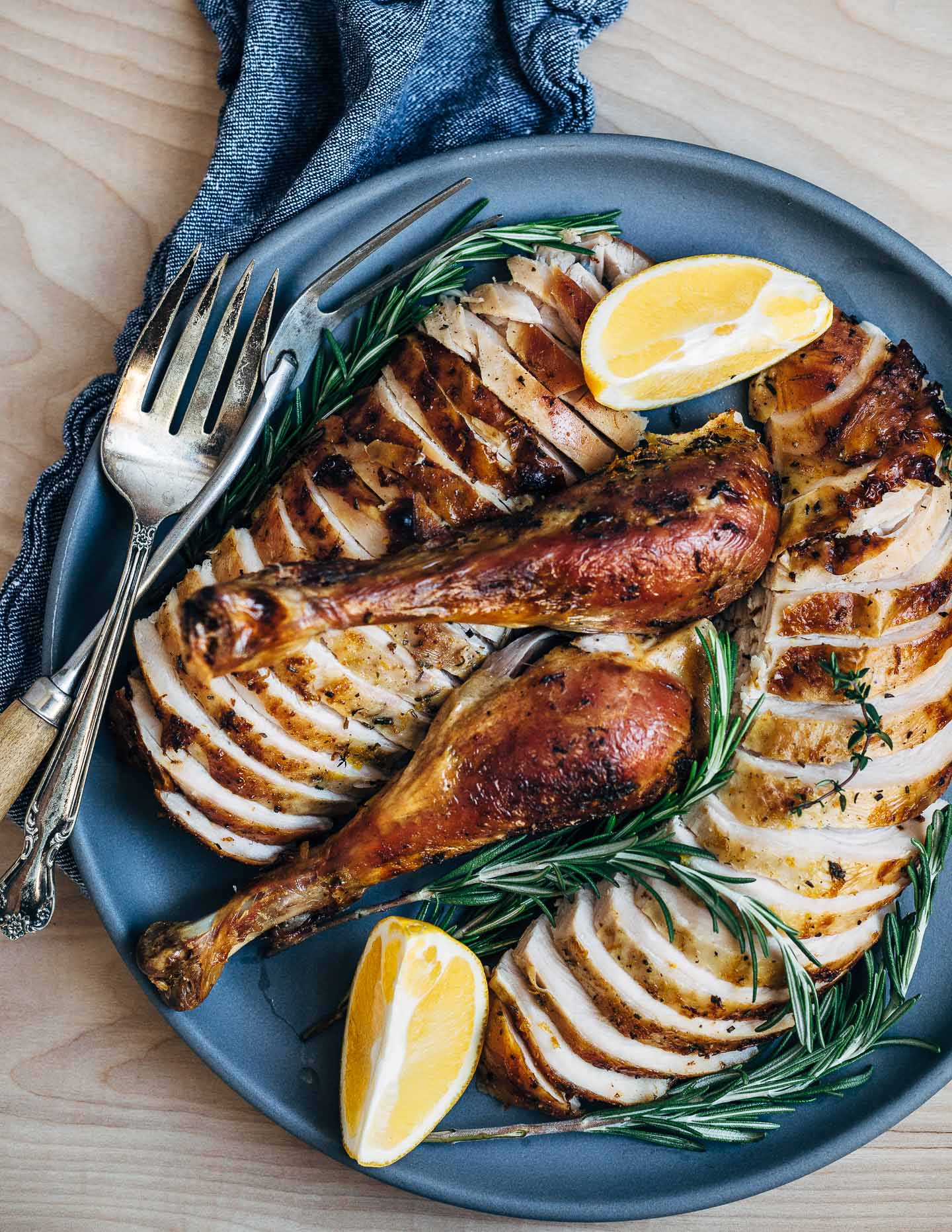
I’ve always been a Thanksgiving person. There’s the creativity that comes from experimenting with traditional dishes (but never straying too far), taking care to feed beloved friends and family a memorable meal, and of course, all the pie. I also relish the challenge of cooking a turkey for a crowd. Because of work, I cook a lot of turkey in the fall months. Testing turkey recipes without the pressure of the big day has given me insight into a host of best practices, and today, I’m going to share them with you.
I’m also going to share an adaptable, and fairly simple recipe for a deliciously savory rosemary-orange turkey – head below for the full recipe and a video!
The Best Turkey
The first key to a flavorful turkey is to find a bird that’s been raised with care. For me, that means an organic, free range bird. That’s why this year, I’m thrilled to be sharing a new offering from my longtime partners at Farmer Focus – organic, free range Broad Breasted Bronze turkeys. Farmer Focus works with small family farms in the Shenandoah Valley. Their partner farmers are independent and are paid well above industry standards for their hard work. If you’d like to get to know your farmer, each chicken or turkey Farmer Focus sells comes with a Farm ID so you can trace it back to its origins. My 14 pound turkey came from Roundhill Farm in Broadway, VA.
Farmer Focus products always have impeccable quality and are available widely on the East Coast and beyond. Find an online or brick-and-mortar retailer near you right here.
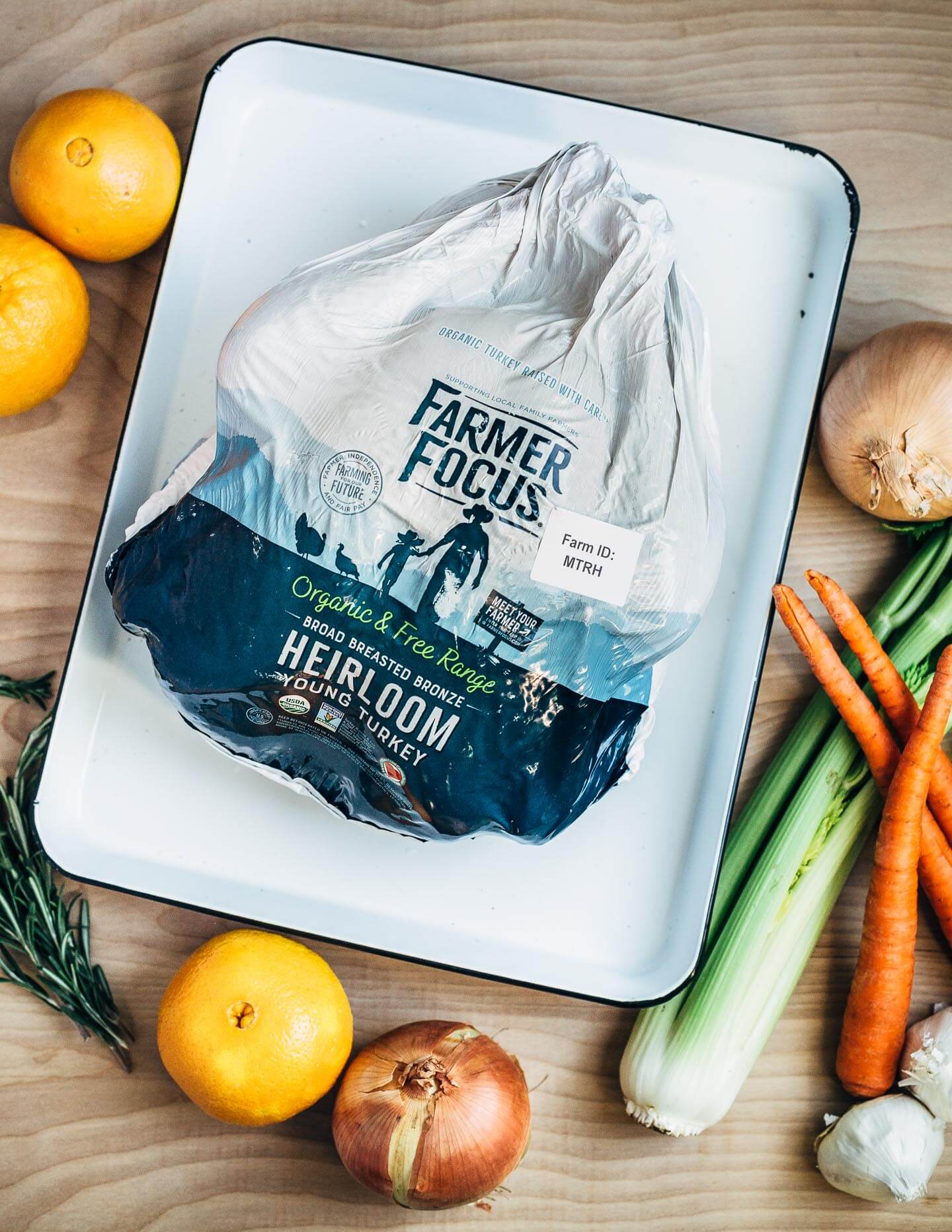
Thawing: An Essential Step
Once you’ve got a great turkey, you’ll need to make sure it’s completely thawed. I’ve had countless birds that seemed thawed suddenly stop cooking when nearing the finished temp. This stalls dinner timing, overcooks the bird in places, and is super frustrating. It’s essential to avoid an even slightly frozen bird.
To do this. allow plenty of time. A frozen bird will take at least one day in the fridge for every 4 pounds. So, if you have a 14 pound turkey, you’ll need a full four days for it to thaw (plus another day for the dry rub to set).
I recommend jump-starting the thaw by setting the turkey (still in its packaging) breast side down in the sink and filling it with cold water (turkey should be completely immersed). Change the water every ½ hour. A turkey under 12 pounds will thaw in about 6 hours. Allow 8 hours for a 12 – 16 pound bird. Once you’ve thawed with the sink method, set the bird on a rimmed tray in the fridge for up to 4 days.
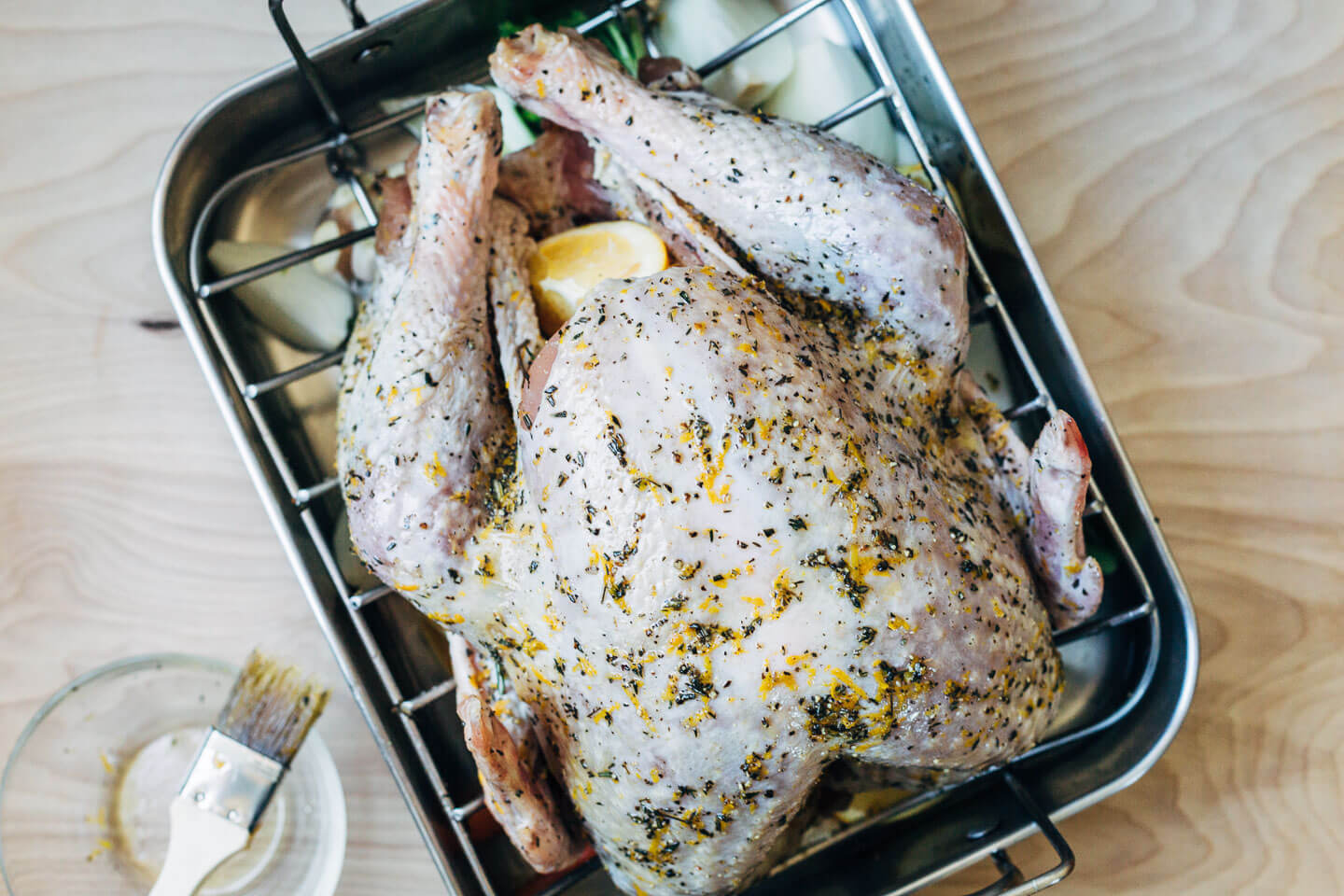
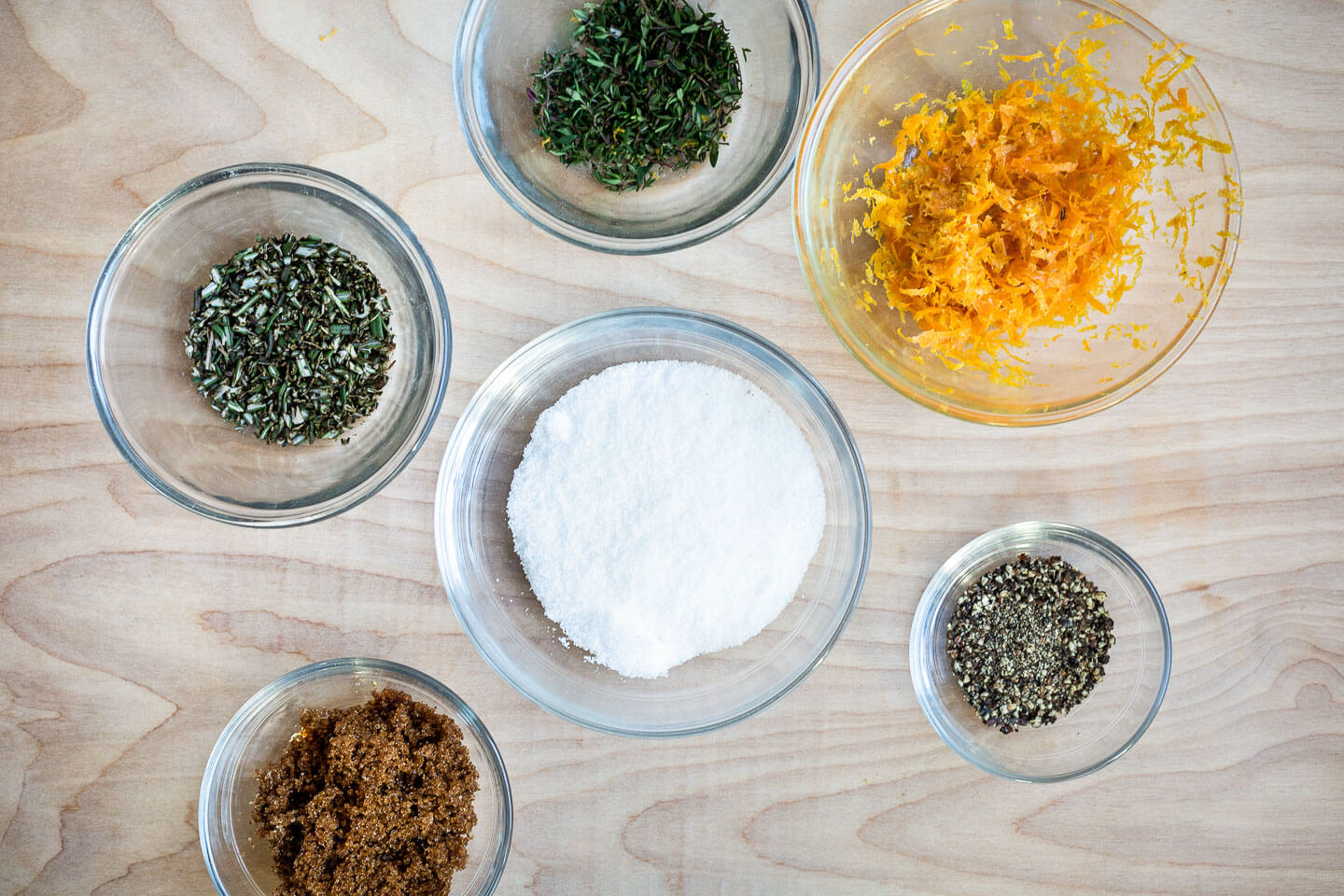
Dry Rub: The Best Way to Season a Turkey
Smaller, more flavorful turkeys like this one from Farmer Focus don’t need a lot of fuss to be delicious. But they do need a little time for the skin to dry out and fully absorb the salt into the meat. The dry rub also gives you a chance to play up flavors – because of the herb-infused dry rub, this rosemary-orange turkey is subtly bright and herbaceous.
My dry rub features a mix of sea salt, brown sugar, fresh rosemary and thyme, and orange zest. If the brown sugar gives you pause, note that it doesn’t lend sweetness, but it does tenderize the meat and helps the skin to brown beautifully. Fresh herbs and orange zest round the flavors out, making for wonderfully savory turkey meat.
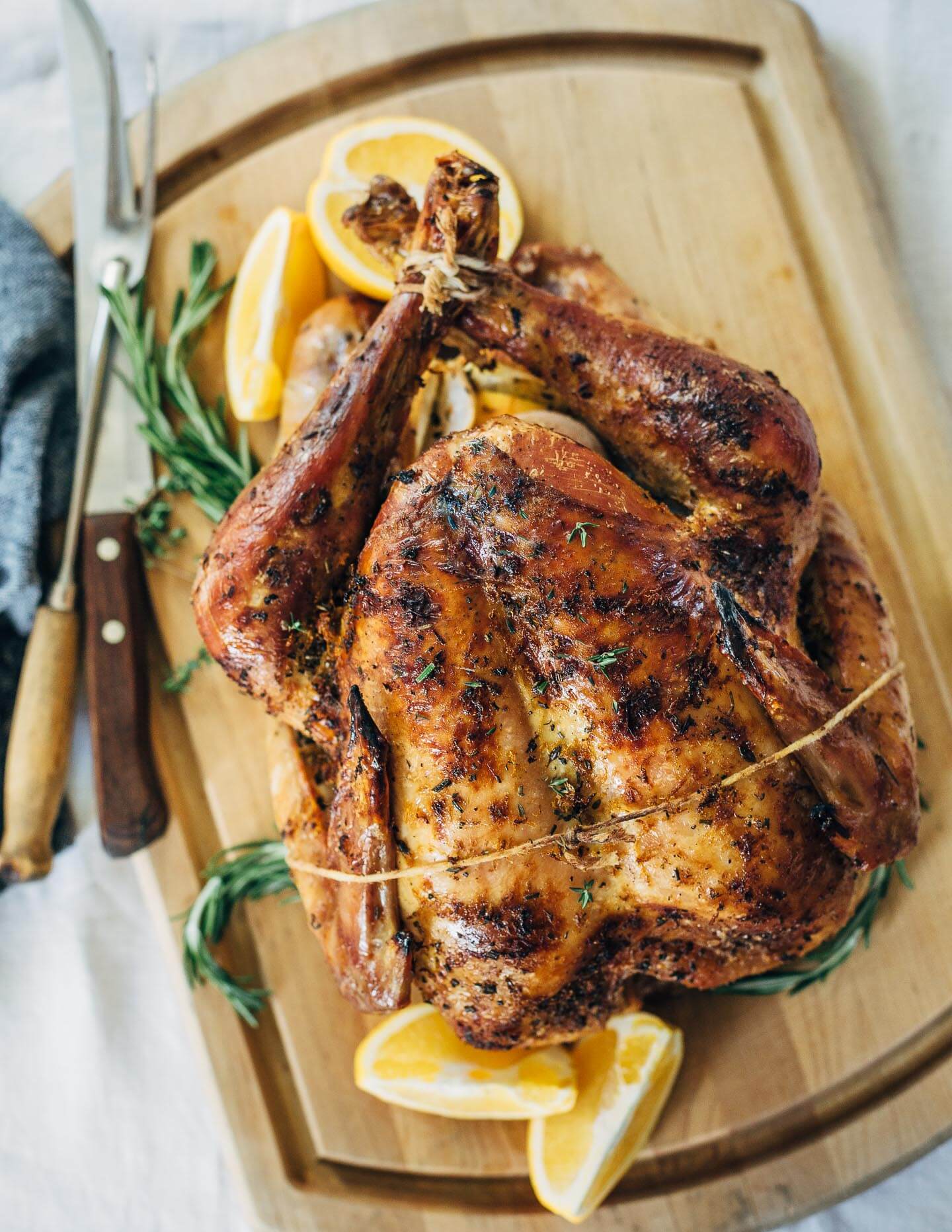
Pulling It All Together: Pan Drippings Gravy
One of the best things about Thanksgiving, and all the leftovers, is gravy. Luckily, making a great gravy from pan drippings is really simple. The first thing you’ll need is rich turkey stock. Butchers and grocery stores often sell it this time of year, but my preferred method is to make my own.
A quick recipe: simmer 3 pounds of turkey legs, 4 quarts water, 2 yellow onions, 4 carrots, 4 celery ribs, 4 cloves garlic, 20 peppercorns, a bay leaf, and a tablespoon apple cider vinegar for about 8 hours. Because of the dry brine, drippings in the roasting pan will be on the salty side, so I refrain from adding any salt to my homemade turkey stock. Once the meat has completely fallen off the bone, strain, and refrigerate the broth. If working more than a few days ahead, you can freeze the stock.
I add onions, garlic, carrots, and celery to the bottom of the turkey roasting pan, along with two cups white wine. As the turkey cooks, they’ll catch the drippings and concentrate flavors. Once the turkey is out of the oven and resting, simply pull the aromatics from the drippings, set the roasting pan over medium heat – I set mine over two burners. (Make sure your pan is safe to be set on the stovetop! If it’s not, just scrape the drippings into a wide saucepan and proceed.) Whisk in 6 tablespoons flour and slowly add the stock – that’s it!
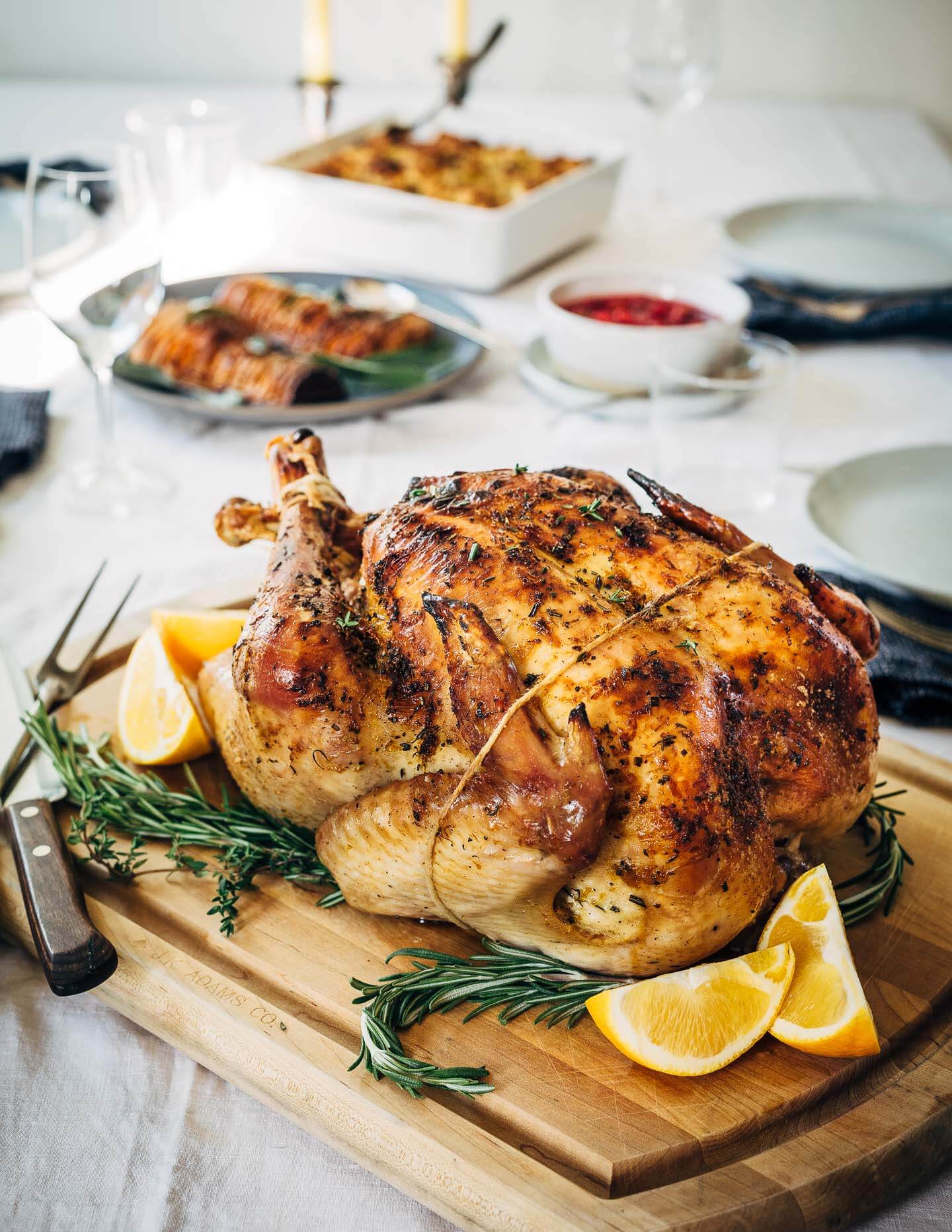
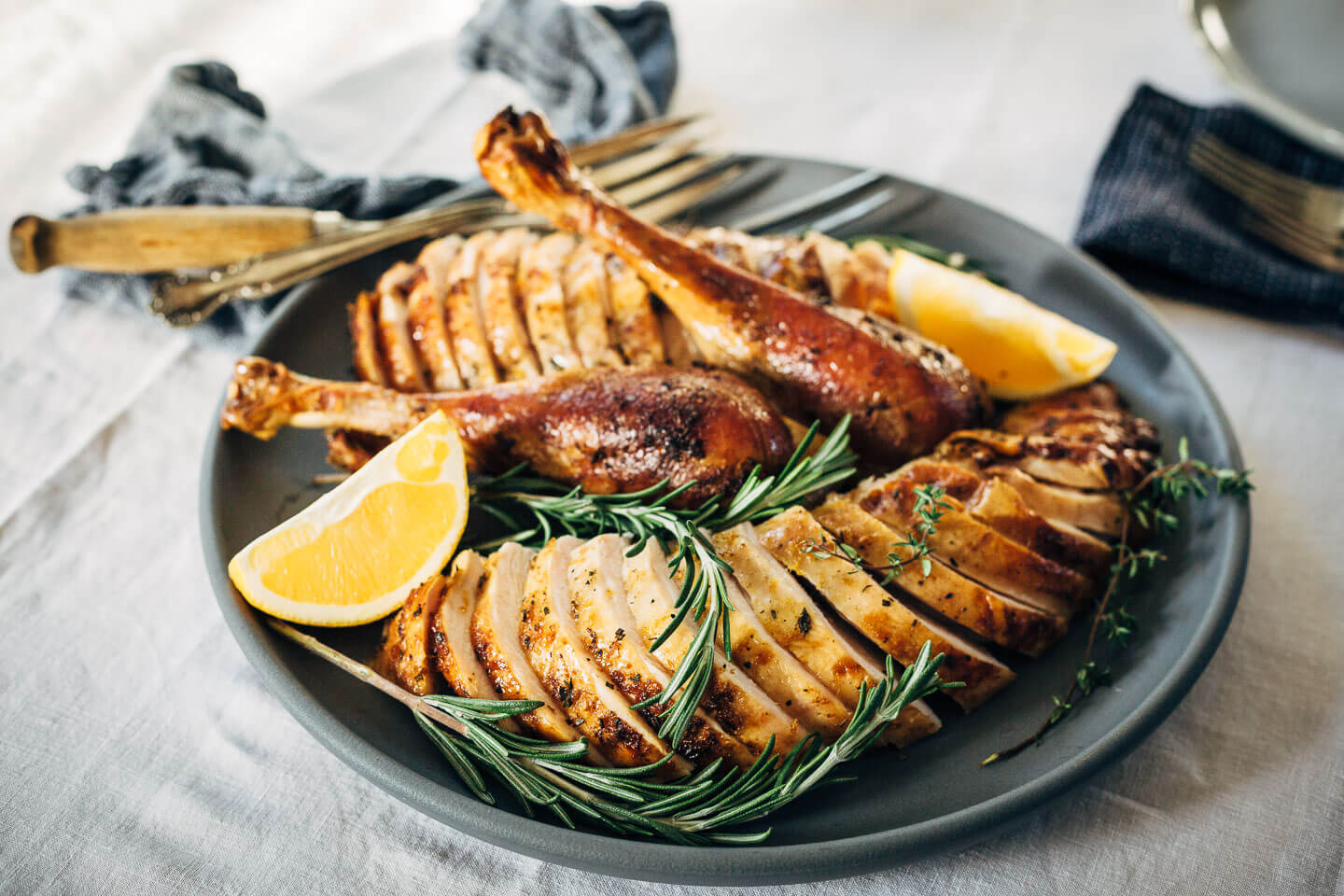
This rosemary-orange turkey roasts up with crisp skin, while the tender meat has just a hint of fresh rosemary and thyme, and bright citrus notes. This recipe is also incredibly simple and forgiving, so if this is your first year making a turkey, you’ll be all right. This site has a lot of Thanksgiving recipes – check out my Thanksgiving recipe index here.
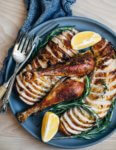
- 1 12 - 15 pound Farmer Focus Heirloom turkey, thawed completely (see note on thawing above)
- 6 tablespoons sea salt
- ¼ cup orange zest, from about 3 oranges (reserve oranges)
- 3 tablespoons brown sugar
- 3 tablespoons minced fresh rosemary leaves
- 2 tablespoons fresh thyme leaves
- 2 teaspoon black pepper
- 2 tablespoons extra virgin olive oil
- 2 yellow onions, peeled and quartered
- 2 heads garlic, root end sliced off
- 2 carrots, scrubbed and cut into 4-inch segments
- 2 celery ribs, cut into 4-inch segments
- Reserved oranges, quartered
- 2 cups white wine
- 6 tablespoons all-purpose flour
- 4 cups rich turkey or chicken stock (see note on gravy above)
-
Working 24 hours ahead, remove turkey from packaging and set on a rack in a roasting pan. Remove neck and/or giblets from the cavity and reserve for stock or gravy.
-
Using paper towels, pat turkey dry inside the cavity and all over the outside. The drier it is, the crispier the skin will be.
-
In a small mixing bowl, combine all the dry rub ingredients and stir. Starting with the back, press and rub about 1/4 of the mixture into the skin. Flip the bird breast side up and rub another quarter of the rub in the cavity. Press and rub the remaining dry rub all over the sides and top of the breast, and all over the thighs. If a great deal has fallen into the pan, carefully scoop it up and press it back onto the bird.
-
Set turkey with dry rub in the fridge, uncovered, for at least 12, but preferably 24 hours.
-
Set turkey on the counter for an hour before cooking to come to room temperature.
-
Preheat oven to 450 degrees F. Move baking rack to the bottom third of the oven.
-
While turkey comes to room temperature, take the rack out of the roasting pan and set turkey on a rimmed baking sheet. Clean and dry the roasting pan – the juices accumulated overnight will make the pan dripping gravy much too salty.
-
To the clean, dry roasting pan bottom, add 1 quartered onion, the garlic, carrots, and celery. Set the turkey back into the roasting pan breast side up. Push a mix of onions and oranges into the cavity. Set remaining onions and 2 orange wedges in the bottom of the roasting pan. To truss the turkey, wrap cotton twine around the breast of the bird to tie the wings close to the sides. Tie the drumsticks together. Finally, brush the turkey all over with the olive oil and add the white wine to the bottom of the pan.
-
Roast 20 - 40 minutes, or until the bird is nice and golden. Turn heat down to 350 degrees F, and cook the turkey until the internal temperature (measured with a thermometer inserted where the thigh meets the breast, and again in the thickest part of the breast) hits 165 degrees F. I like to check the turkey every half hour starting at the 2 hour mark. If the breast or wings start to brown too much, add a foil tent over the turkey. Refrain from basting the bird – the skin will crisp and brown perfectly just as it is.
-
When the internal temp is at 165 degrees F, after about 3 - 4 hours total, set the bird on a carving board and rest, tented with foil, for 30 minutes.
-
Meanwhile set the roasting pan over 1 - 2 burners on medium heat, use a slotted spoon to remove the aromatics, vegetables, and oranges. Whisk the flour into the drippings. Once the mixture has thickened, still whisking, slowly add the stock, allowing mixture to thicken between additions. Edge heat lower, if needed. Continue cooking and whisking until all the stock has been added. If desired, scrape gravy into a smaller pan and keep over the lowest possible flame until it’s time to serve.
-
Remove the trussing, carve the turkey, and serve!
Leave a Reply